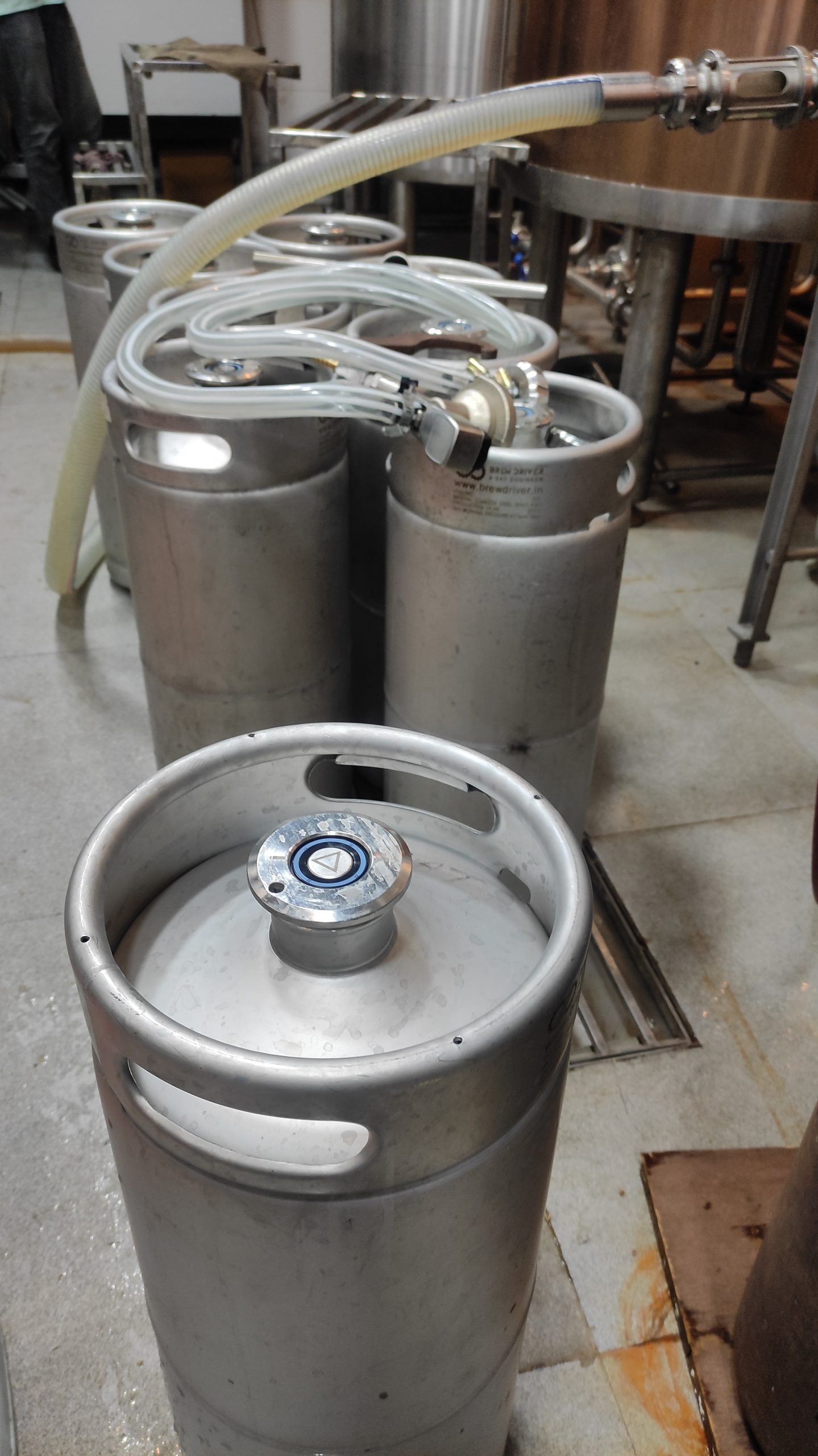A microbrewery or craft brewery refers to a beer manufacturing unit that produces small amounts of beer in a batch. Microbreweries are independently owned and target a niche audience — distinguishing themselves from large-scale corporate breweries, based on the quality, brewing techniques, flavor of the brews, and more.
India has seen growth in the microbrewing business, especially in tiny areas of Bengaluru, Pune and Delhi neighboring cities such as Gurgaon and Noida. Ghaziabad, too, got its first microbrewery, Hit A Pint, in the city’s upscale Raj Nagar.
The brewery, which produces 3,000 liters of fresh beer in a month, sources its beer malt water from Germany, with flavors curated to suit the Indian palate. Hit A Pint serves a variety of beers, including craft beer.
According to market research company Imarc, the overall beer market in India was valued at Rs 383.6 billion in 2022 and was expected to grow at a CAGR of 8.1% during 2023-2028. Based on the production, the India beer market is categorized into macro-brewery, micro-brewery, and others. Among these, the macro-breweries or the industrial-size units account for the largest share.
With a rise in demand for ‘specialty beers’, microbreweries are also slowly growing ground.
Siddharth Chaudhary, the founder of the brewery that offers a variety of beers and cocktails, says, “As a microbrewery and restaurant owner, my goal is to create a unique and memorable experience for every customer. From the quality of our craft beer to the freshness of our ingredients, we strive to exceed expectations and leave a lasting impression. We believe good food and good beer bring people together, and we’re proud to be a part of that tradition.”
Hit a Pint has got brewing machines from Brew Force India, a company that has been delivering processing and engineering equipment and solutions to breweries and many distilleries for 35 years.
“As a fine-dine restaurant, infused with a restro-bar atmosphere, Hit A Pint caters to an upscale crowd, primarily families. The restro-bar has open workstations at one corner, which can be utilized by those who want to work and enjoy their drinks. The bar, unlike other restro-bars, has an unconventional lower seating style, inspired by the bars of New York. The beveled mirror on the walls adds to the brewery’s grandeur, giving the impression of a larger space,” Chaudhary said.

A microbrewery may or may not have a packaging facility. Generally, microbreweries sell on the premises using mugs or pitchers filled directly from the tap. In India, microbreweries are allowed to keg their beer for sale in other nearby bars and pubs. Kegging is the process where freshly brewed beer is filled in pressurized and insulated vessels known as kegs. Bars purchase these kegs from microbrewers at wholesale rates and sell them at retail prices at their premises.
Brewing is a process for the production of malt beverages. Ale and lagers are the main malt beverages produced by this method. Brewing is a complex fermentation process. It differs from other industrial fermentation because flavor, aroma, clarity, color, foam production, foam stability, and percentage of alcohol are the factors associated with the finished product. The brewing process can be broken down into four simplified steps — mashing, separation, boiling, and fermentation. Together, these four steps create a variety of beers.

Chaudhary, who has done elaborate research on the subject, said, “Craft beer has a much better taste in comparison to commercial beer as it is fresh and without any additive preservatives. Glycerine is added in commercial alcohol to heighten their shelf life whereas craft beer only has a shelf life of 20 days. The glycerine is responsible for the bloating effect in beer where water gets retained in the belly of a consumer. Brewing is the amalgamation of basic chemistry and temperature regulation and anything sweet can be turned into alcohol. The technology of brewing is not limited to sweet stuff; many breweries in Delhi and Gurgaon make beer from popcorn and so versatility in beer is increasing.”
Hospitality is one aspect Hit a Pint focuses on, Chaudhary adds. “Beers being good is nice but food quality is of utmost importance to us. A restro-bar is known for its ambiance, service, and food. During weekdays, we see a lower crowd of drinkers. We try our best to be known for our food alongside our fresh brews. We have also started lunch meal platters for students and a variety of mocktails to choose from.”
IndiFoodBev — authentic, impactful and influential
An English-language food and beverage processing and packaging industry B2B platform in print and web, IndiFoodBev is in its third year of publication. It is said that the Indian food and beverage industries represent approximately US$ 900 billion in revenues which implies more than 20% of the country’s GDP. Eliminating the wastage on the farmside can help to deliver more protein to a higher number of the population apart from generating sizable exports. The savings in soil, seeds, water, fertilizer, energy and ultimately food and nutrition could be the most immense contribution that country is poised to make to the moderation of climate change.
To improve your marketing and grow sales to the food and beverage processing and packaging industry, talk to us. Our research and consulting company IppStar [www.ippstar.org] can assess your potential and addressable markets in light of the competition. We can discuss marketing, communication, and sales strategies for market entry and growth.
Suppliers and service providers with a strategy and budget for targeted marketing can discuss using our hybrid print, web, video, and social media channels to create brand recognition linked to market relevance. Our technical writers are ready to meet you and your customers for content.
The second largest producer of fruit and vegetables in the world is continuously expanding processing capacities and delivery systems with appropriate innovative technologies. We cover product and consumer trends, nutrition, processing, research, equipment and packaging from farm to thali. Get our 2025 media kit and recalibrate your role in this dynamic market. Enhance your visibility and relevance to existing markets and turn potential customers into conversations. Ask for a sample copy of our bi-monthly in print or our weekly IndiFoodBev eZine each Wednesday.
For editorial info@ippgroup.in — for advertisement ads1@ippgroup.in and for subscriptions subscription@ippgroup.in
Naresh Khanna – 10 February 2025
Subscribe Now












